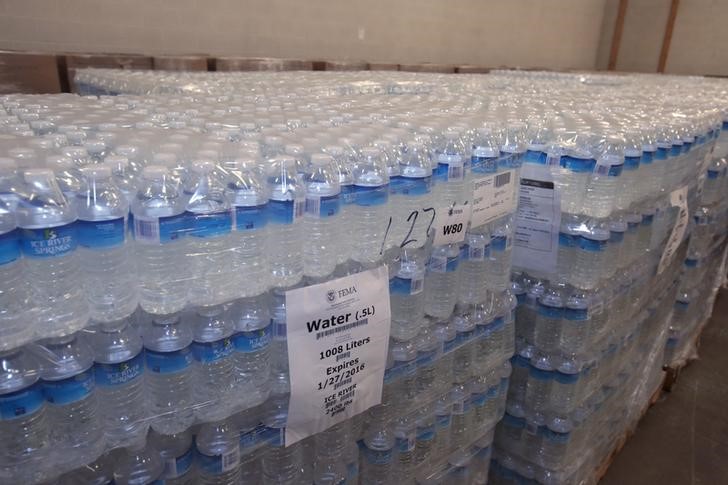Disruptions in energy markets linked to a global growth recession have had a huge impact on the shipping industry. The container trade, which mostly caters to consumer demand as well as transporting machinery, is instituting what is known as “tactical cancelled sailings” in response to low demand. At the same time, the tanker trade is enjoying abnormally high contract rates.
Normally, at this time of the year, there’s a surge in the flow of goods from Asia’s manufacturing hubs to match festive season demand in Europe and America. Walmart and Home Depot usually charter entire ships and cargo planes.
This year, however, First World retailers are struggling to shift inventory. Shipping and logistics outfits are faced with few orders and low rates. Maritime research firm Drewry says that 117 sailings out of a scheduled 744 voyages in October on the Trans-Pacific, Trans-Atlantic, Asia-North Europe and Asia-Mediterranean routes have been cancelled. FedEx says it is cutting down cargo flights. Trade experts believe this weak trend will continue until at least the Chinese New Year (late January 2023).
The collapse is reflected in contracted freight rates. Drewry’s World Container Index, which tracks the average cost of shipping a 40-ft container across the world, has fallen 65 per cent from an average of $9,865/container in Oct. 2021 to $3,383 this week. Freightage on key routes like Shanghai-Los Angeles and Shanghai-Rotterdam has fallen even more, by 77 per cent and 70 per cent respectively. Spot container rates are also down, by around 30 per cent, in the last 12 months.
You might also like
Walmart will boost Flipkart with $3bn to challenge rivals
Why Reliance investors remain unimpressed
After Sep quarter show, ITC’s stock is still lit
A PLI scheme to defend power grids from Chinese cyberattacks
The Baltic Dry Index, which tracks the movement of bulk commodities like coal, foodgrains, and iron ore, is down 58 per cent in the last 12 months. This is yet another data point indicating weakened demand.
However, petroleum tanker rates (product tankers as well as crude carriers) are sky-high, due to fears of supply disruptions caused by the Ukraine War. Gas carriers are also in very high demand. Further disruptions to the energy markets are expected, as the EU’s sanctions on Russian crude and gas kick into effect, just as heating demand spikes across the northern hemisphere.
VLCC (very large crude carrier) rates are at 30-month highs. LNG tanker rates even higher. VLCC contract rates have jumped from an average of $6,700/day in calendar year 2021 to nearly $100,000/day in October. LNG rates are already above $100,000/day. Around 10 per cent of LNG tanker capacity is currently being used for storage rather than transportation, as traders speculatively stock up on gas ahead of Europe’s winter. The economics of the gas trade are mind-boggling at this instant. One cargo of NG bought at current US prices and sold in Germany will yield profits equivalent to 70-75 per cent of the value of the tanker carrying that cargo.
Overall, all shipping rates remain well above pre-pandemic (2019) levels, due to port congestions and container shortages. Container manufacturing was deeply affected by Covid-19. Roughly 90 per cent of containers are manufactured in Mainland China and Hong Kong and the industry is struggling to cope with a combination of raw material shortage and rolling lockdowns.
The shipping industry also faces several other problems that could plague it through 2023 at least. There’s an anticipated oversupply of ships, alongside deep labour shortages. ING estimates 14 per cent will be added to global capacity in 2023 as new ships are launched.
But there is labour shortage across the workforce of mariners and port personnel. Roughly 15 per cent of the global seafaring community is drawn from Russia and Ukraine, and the Ukraine war has led to tightness. Inflation has also led to demands for higher compensation from sailors and port workers. Strikes and industrial actions are affecting work at many ports in Europe, Korea and the US. Climate change has also had a negative impact. Low river water level across Europe and the US has led to clogged up inland water transport systems, messing up a key component of the logistics chain.
Shipping is, of course, hyper-sensitive to trade flows, which in turn, are sensitive to global economic activity. The gyrations in freightage and tanker contract rates are symptomatic of serious ill-health across the global economy. So are the complications in the labour market. A reversion to normality in shipping trends would also indicate that the global economy is back in shape but that in turn will depend on geopolitics.
Elsewhere in Mint
In Opinion, Vivek Kaul tells why our love of government jobs is bad for the economy. Pranjul Bhandari suggests a two-pronged strategy for India’s external balances. Andy Mukherjee writes on what Reliance will sell next to someone who’s already guzzling data. Long Story reveals how a China-linked firm ran a maze of fraud firms.
Download The Mint News App to get Daily Market Updates.
More
Less















